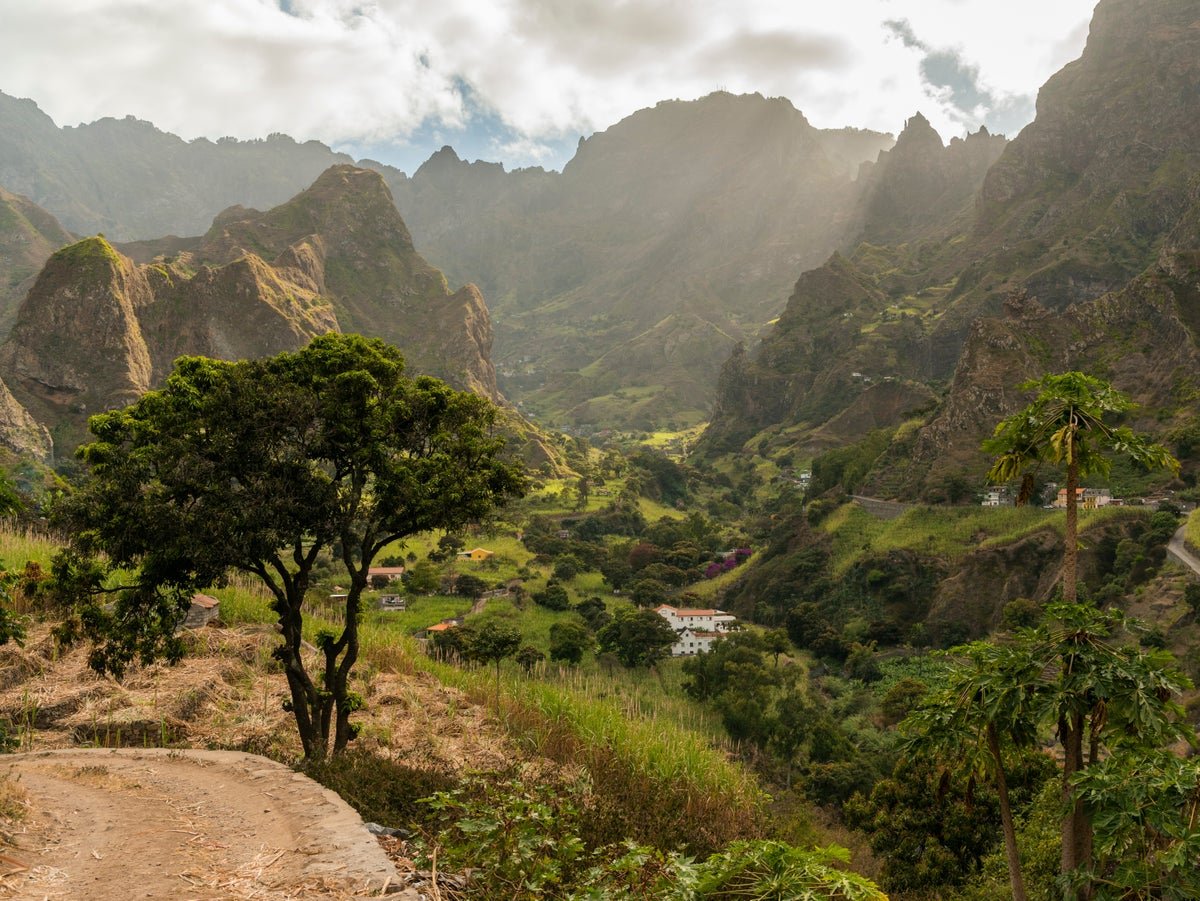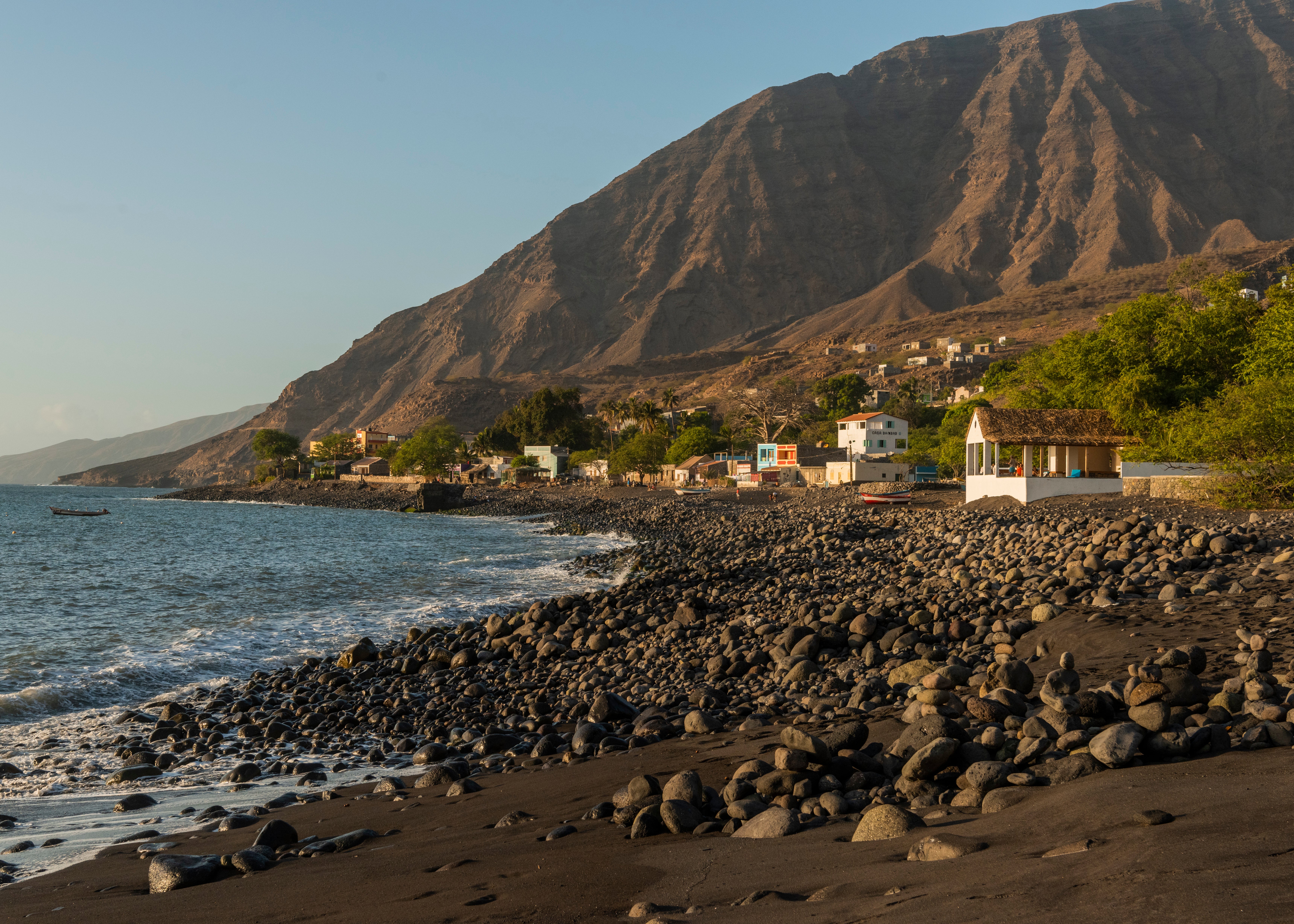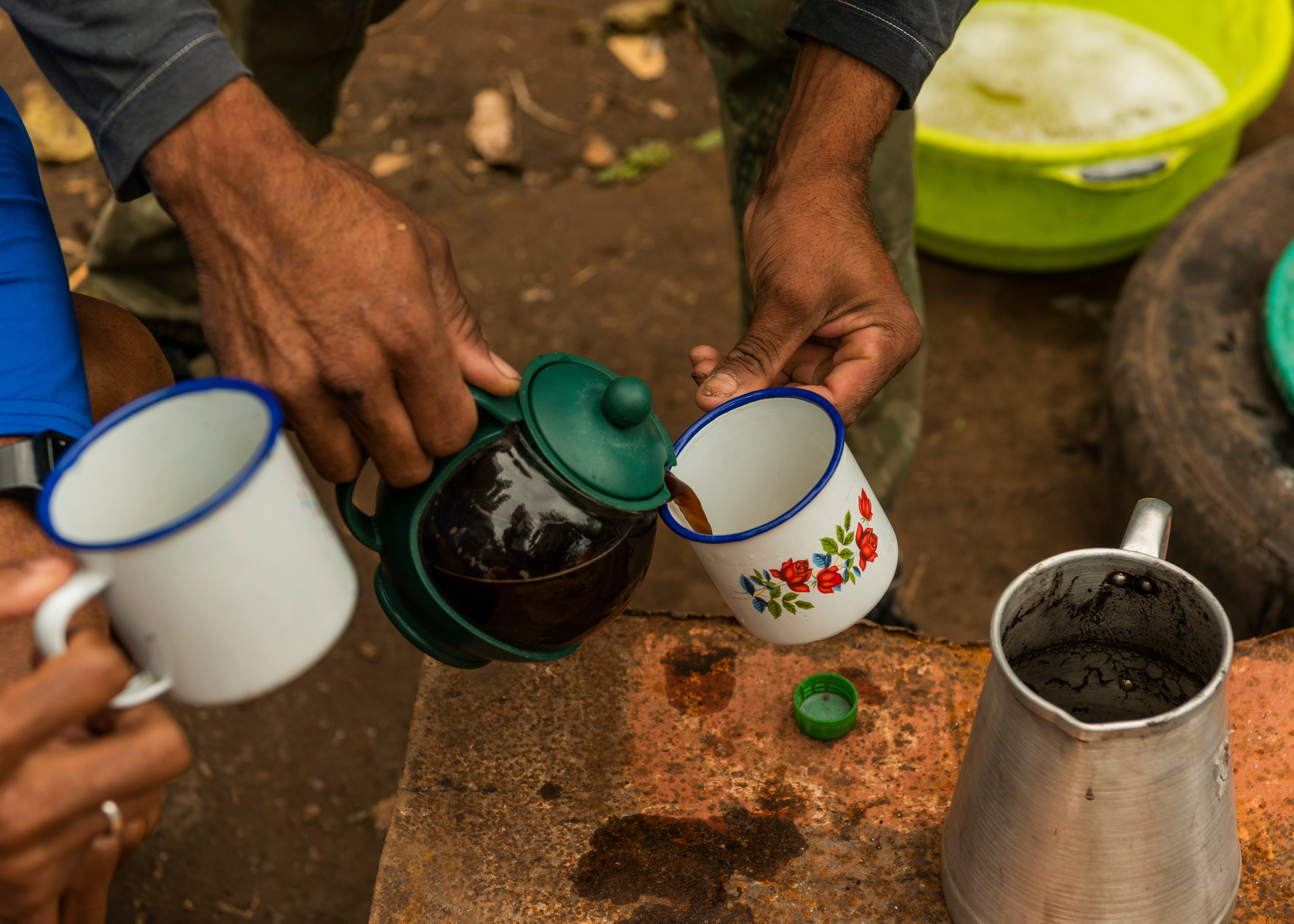
When we first spot the men who teach us about the Cape Verdean concept of “morabeza”, they’re picking congo beans on a terrace hacked out of a rock face hundreds of metres above Santo Antao’s Paul Valley. With our local guide Claudio Evora translating, Mark Rammers, the photographer for the trip, asks whether he can take their picture.
Two hours later, we’re perching on hand-carved stools outside the taller of the two, Adrienne’s, thatched cottage, listening to zouk and sipping home-roasted coffee. Every so often, our hosts disappear into the greenery and return clutching papaya, guava cherries and sour tangerines with green skins, which they peel daintily and present to us in bite-sized segments. I feel like a spoilt child being doted on by two benevolent uncles. Or a deluded captive being fattened up for sacrifice.
With its volcanic valleys pregnant with fruit trees and moonscape mountains, Santo Antao is the least visited and most beautiful of Cape Verde’s nine inhabited isles. Our eight-day itinerary takes us from the cloud-drenched Cova de Paul crater to the black sands of Tarrafal beach via the village of Fontainhas – which clings like a candy-coloured parasite to the northeast coast – and the pitilessly dry Cha da Morte plateau.

The word “morabeza” comes up again and again when researching the trip; as a Londoner yearning for community, I’m intrigued. Definitions vary from “hospitality” to “chill out” but they all agree on one thing: though difficult to put into words, morabeza is unmistakable once felt. I have a strong suspicion I might be basking in it right now.
“I love the peace of this place and eating my food fresh from the fields,” says Adrienne. “Morabeza is about sharing that lifestyle with visitors – showing what it means to live simply and with heart.”
Antonzinho, his best friend since boyhood, chips in: “We don’t have money here in the mountains but the important thing is heart and we give that freely whenever we can.”
As we continue our hike from Cova de Paul down vertiginous slopes to the Paul Valley (knees screeching, eyes wide), Claudio informs us that there was nothing unusual about this interlude.
Though difficult to put into words, morabeza is unmistakable once felt. I have a strong suspicion I might be basking in it right now
“All Cape Verdeans have morabeza but it’s particularly strong on Santo Antao. To the people of this island, hospitality is a real pleasure.”
Next morning, a dip in the natural pool at eco-lodge Aldeia Manga sets us up for a day of exploring the local grogue (sugarcane rum) distilleries. It’s March, when production is in full swing, and faint whiffs of burning sugarcane accompany our breakfast of pastries and homegrown-guava jam.
Cristiano Costa’s distillery, two minutes’ walk from the hotel, is not officially open to the public – but when we knock hesitantly on the gate he laughs and waves us in, before pointing out the fire where the liquid is heated and the alambique distillation machine. As we swig sugar cane juice from tin cups, he explains what morabeza means to him. “It’s making extra when you cook so there’s enough to share with neighbours. Or children knowing that if they get thirsty on their way home from school, they can always drop by for a sugarcane juice. Really, it’s just about sharing whatever you have.”

Each of our four hikes is spectacular, but the Celado do Mocho trail is my favourite. The path zigzags steeply upwards until it makes me dizzy to look down into the valley. Claudio strolls along with his hands clasped behind his back, pointing out the agave flowers that grow straight and tall as telephone poles.
“My mother used to walk this path four times every week with a tub of fish balanced on her head, selling door-to-door,” he remarks casually. I’m too out of breath to answer.
We’re having lunch at Joana’s Restaurant in Selada de Mocho, an oasis among walls of rock. Despite its isolation, the lunch is the most varied and generous of the whole week: grilled pork, a tray of manioc, yams and sweet potato, couscous, salad, rice and a huge bowl of donuts dusted with coconut.
Claudio strolls along with his hands clasped behind his back, pointing out the agave flowers that grow straight and tall as telephone poles
“This is the way with the people of the mountains,” whispers Claudio. “The less they have, the more generous they are.” Joana, beaming and spotless in a pink and white striped apron, keeps urging us to eat more – it’s hard to comprehend that she and her daughters carried every mouthful 3km up the mountain from Cha de Igreja.
Over coffee she tells us that, of her 11 children, all but the two daughters she employs have gone overseas to work. It’s a common story. The fertile soil should lend itself to agriculture but the island is in the grip of a ferocious drought – it hasn’t rained since 2016. Islanders mostly survive off water from clouds snagged on mountain peaks that trickles down into stone troughs before being distributed fairly amongst the community using electric pumps. In drier areas, locals breed chickens and goats, often keeping them in tiny caves hollowed into the cliff face.

The drive from Cha da Morte to Tarrafal, the fishing village in the SW that’s our final stop, is magnificent. At some points we’re eye level with Tope de Coroa (which, at 1,979m, is the highest peak on the island). Below us the landscape is tawny, with canyons like scars and hills as smooth as mounds of sugar. From the Selada de Tarrafal viewpoint, both the sea and sky are dazzling white.
Along the way, we see a gas station with a queue of orange containers, each neatly labelled with its owners’ name.
“Because of the drought we need gas to purify sea water but there’s a huge shortage,” Claudio explains. “People get up at 4am to put their container in line and there’s still no guarantee they’ll get any.”
Below us the landscape is tawny, with canyons like scars and hills as smooth as mounds of sugar
It’s the latest chapter in a series of challenges. “The pandemic was hard for us, too. I’d say our visitor numbers are only back to around 20 per cent what they were, which has forced a lot of people to leave their homes to find work. And now, with Europe at war, we’ll probably go hungry as we depend on imported maize.”
So would he consider leaving too? He grins.
“Never. The power of the mountains makes me strong. I was born here and I’ll die here. If you love nature, there’s nowhere better to be.”
Travel essentials
Imogen and Mark travelled with Archipelago Choice on a bespoke version of their nine-night Santo Antao walking holiday. The seven-night trip costs from £2,300pp (based on two people sharing) and includes one night on Sao Vicente, five nights on Santo Antao and the last night on the island of Sal. The price includes return economy flights from the UK, transfers, one jeep tour, four guided walks and hotel accommodation.







